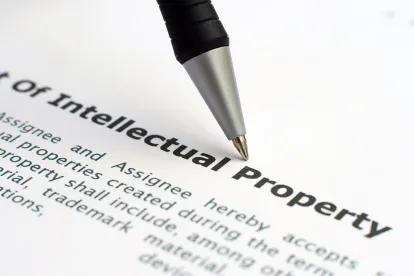The Patent Trial & Appeal Board refused to terminate an inter partes review (IPR) proceeding, finding that collateral estoppel and claim preclusion do not apply to previous findings from a district court proceeding. Patent Quality Assurance, LLC v. VLSI Technology LLC, IPR2021-01229, Paper No. 128 (PTAB June 3, 2023) (Melvin, Giannetti, McNamara, APJs).
Patent Quality Assurance filed a petition for IPR on July 7, 2021, against a patent owned by VLSI. The Board granted institution. The Board later instituted on a substantively identical petition filed by Intel and granted Intel’s motion for joinder to add Intel to the Patent Quality Assurance IPR proceeding. Prior to the July 7, 2021, petition, litigation between VLSI and Intel resulted in a jury verdict that Intel infringed certain claims of the challenged patent. Invalidity was not presented to the jury. On May 10, 2022, the district court entered final judgment, including a finding that Intel had not proven invalidity. Based on the district court’s judgment, VLSI asserted that claim preclusion barred Intel from challenging validity of the asserted patent in IPR and sought termination of the IPR as to Intel.
VLSI argued that the elements of claim preclusion were met because both VLSI and Intel were parties to both cases, the district court entered a final judgment for infringement and no finding of invalidity, and the effect of Intel’s IPR was to collaterally attack the final judgment in the first case. Intel responded, arguing that claim preclusion does not apply to IPRs from the district court under the America Invents Act (AIA).
The Board agreed with Intel that estoppel did not apply. Intel argued that if Congress had intended for IPRs to be precluded by claims in a parallel district court, it would have identified that as one of the estoppel circumstances in the AIA. VLSI argued that the Supreme Court’s 1991 decision in Astoria Federal sav. & Loan Ass’n v. Solimino applies only when an agency decision precludes a later court decision and, therefore, common-law claim preclusion would apply to the IPR proceeding barring a plain statement from Congress showing intent to overcome preclusion.
The Board disagreed, noting that the cited case law related to statutes where a later statute superseded the earlier one and required a clear and manifest intent to repeal the earlier statute. The Board found that there was no express intent to repeal the earlier statute regarding estoppel, and the jurisprudence constantly counsels against repeal “by implication.” The Board also crucially noted that there was no statutory conflict between the earlier and later statutes, and the question, therefore, was whether (under Astoria) the AIA showed congressional intent that common-law claim preclusion should apply to IPRs.
Reading 35 U.S.C. § 315(e), the codification of the AIA’s estoppel provision, the Board noted that the statute clearly imposes estoppel on future agency and district proceedings but says nothing about applying adjudications in district court proceedings at the Board. As the Board explained, there would be no reason for § 315(e) to spell out the situations in which claim preclusion applied if Congress had intended for the common-law doctrine to open a two-way road between the district court and the US Patent & Trademark Office. Rather, the Board found that “the AIA expressly imposes claim preclusion in one direction—from an IPR to other proceedings[.]” Based on the statutory interpretation of the AIA, the Board declared that preclusion only affects the road from the agency to the courts and later agency decisions.



 />i
/>i
